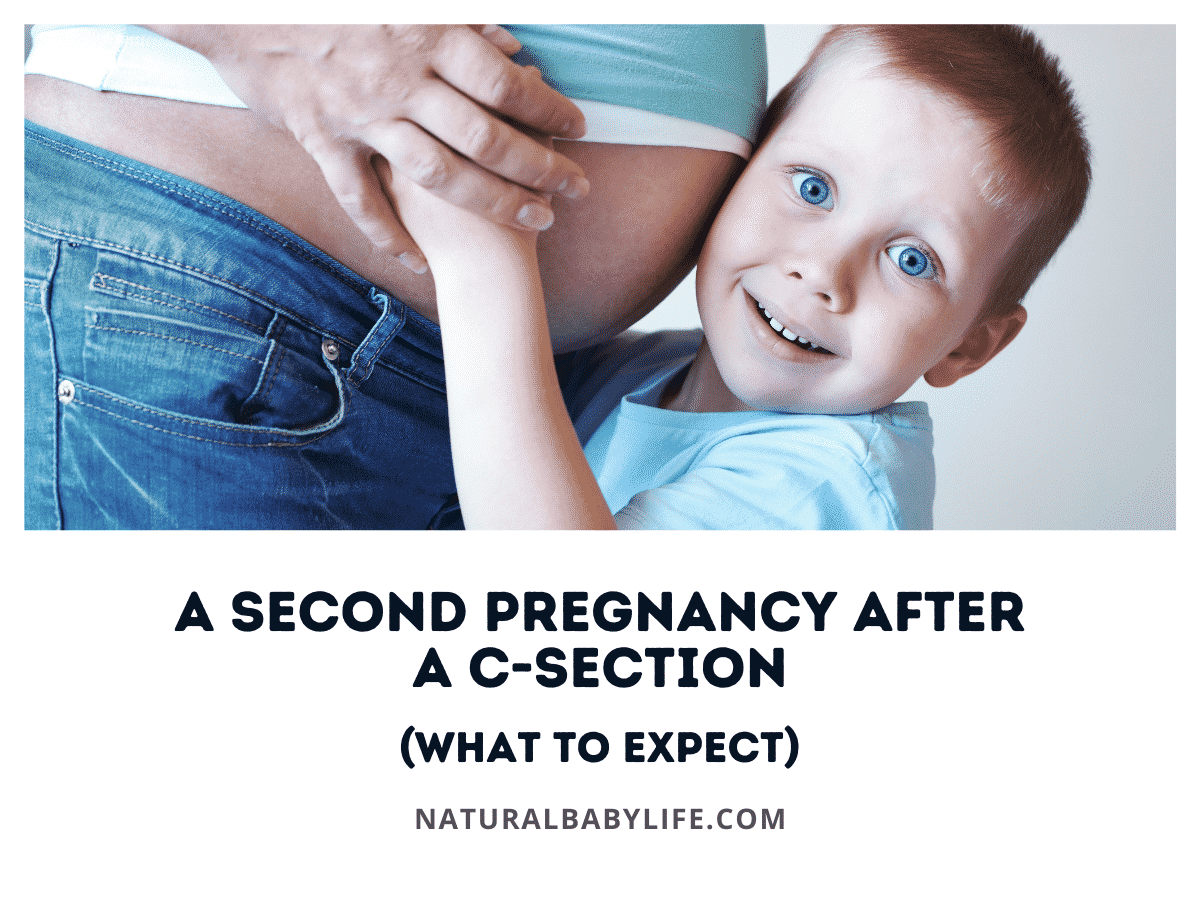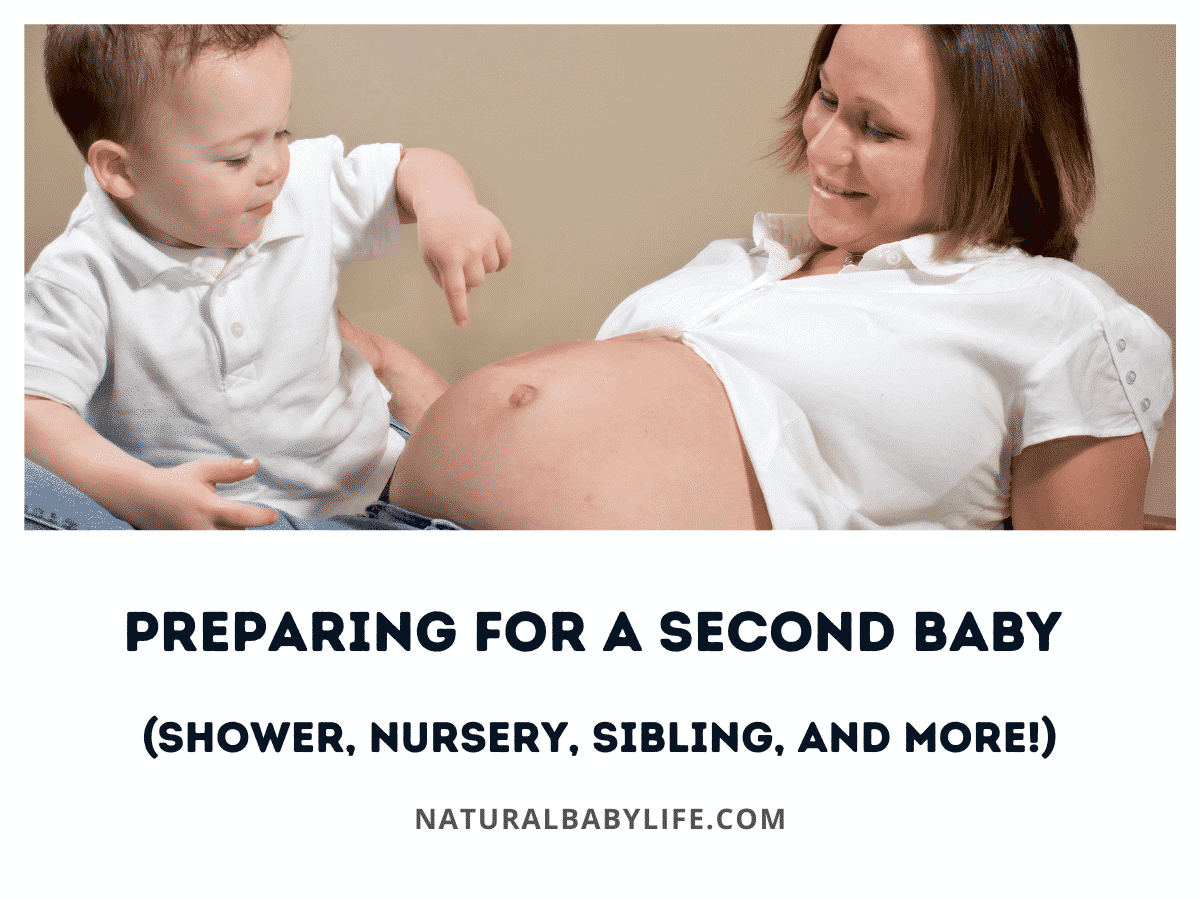You’re excited to receive the news that you are expecting your second child, but, having delivered via C-section with your first pregnancy, you wonder how this birth may be different. Curious, and a little concerned, you wonder – what you should expect with your second pregnancy after a C-section?
Second pregnancies following a C-section delivery are safe for most women, although there is an increased risk for complications during both pregnancy and delivery. Women should consult their doctors or midwives when becoming pregnant, and extra precautions should be taken to ensure they have healed fully to minimize the risk of complications.
Read on for more information about what you can expect with your second pregnancy and delivery after having a C-section delivery for your first baby! We’ll also cover the recent trend in delivery methods after a C-section.
Table of Contents
Is it okay to get pregnant again after a C-section?
Many women end up giving birth via C-section, whether or not it was part of their initial plan. Cesarean births require more healing on the part of the mother – up to 8 weeks compared to more like 6 weeks for an uncomplicated vaginal delivery.
C-sections are on the rise in the U.S. and across the world, and 20% of births (expected to be up to 29% by 2030) are now delivered via C-section, so concerns about subsequent births are common.
For most women without prior complications or serious medical conditions, it is safe to become pregnant again with a second baby after a C-section delivery. Pregnancies following C-sections are safe and there is little increased risk until after your third C-section.
While it is okay for most women to become pregnant after a C-section, it is highly recommended that you wait until a minimum of six months before conceiving a second time, but ideally at least twelve to fifteen months later so that your internal and external scars can heal completely.
Potential issues during a second pregnancy after a C-section
There are some potential issues with a second pregnancy after a C-section, but fortunately, these issues can be anticipated and addressed with your doctor throughout your pregnancy.
Potential risks that could arise during a second pregnancy after a C-section include:
- Cramping from the stretching scar tissue – As your second baby begins to grow and thrive in your womb, your belly and the uterus within begins to stretch. This expanding and stretching can result in pain ranging in severity from mild to severe. The pain may feel similar to menstrual cramping or feel sharp or burning.
- Uterine rupture – This rare complication is one in which a uterine scar from a previous C-section has opened up entirely due to pressure on the walls of the uterus. When this occurs, the protective sac that surrounds an unborn baby can be pushed from the uterus and into the abdomen. This condition requires immediate emergency C-section delivery.
- Placental abruption – A rare yet extremely serious condition more common in women who have had many babies, Placental abruption is a condition in which the placenta, a baby’s source of oxygen and nutrients, separates from the uterus before a baby is delivered or during labor. This can be dangerous for the mother and deprive the baby of oxygen and nutrients.
Keep in mind that no internet search is a substitute for personalized medical advice so please be sure to check with your doctor if you have any concerns regarding potential issues during your pregnancy after a C-section
When is it safe to have a second baby after a cesarean?
Generally speaking, it is highly recommended that women wait at least six months before becoming pregnant following a C-section delivery.
Many doctors and medical experts suggest waiting as many as twelve to twenty-four months with six months between C-section and new pregnancy being the minimum wait time. However, women have had successful pregnancies in less time with careful care and medical supervision.
Be sure to check with your doctor regarding any concerns you may have about the safety of having a second baby after delivering by cesarean.
How long does it take for a cesarean to heal internally?
Although common, C-sections are considered major surgery and can require up to two months for complete recovery.
Most cesareans heal internally fairly quickly, with uterine stitches dissolving within two to three days after delivery.
Your (external) abdominal incision scar, on the other hand, will be sore, painful, itchy, or numb for weeks or months after delivery. Many women find that these symptoms begin to subside around six weeks after delivery.
If you are experiencing swelling, bleeding, or a strong odor from your healing incision, bring them to the attention of your doctor or midwife immediately.
What if you are pregnant again 2 months after a C-section?
If you are pregnant again two months after a C-section, you are at an increased risk of serious complications and you should consult with your doctor or midwife immediately.
What if you are pregnant again 3 months after a C-section?
If you become pregnant three months after a C-section, consult your doctor or midwife immediately.
Can the second pregnancy have a normal delivery after a C-section?
After delivering by C-section, it is possible and safe for many women to deliver vaginally. Whether a mother is able to deliver vaginally after a previous C-section delivery depends upon a few important factors and is a decision to be made with your doctor or midwife.
A vaginal birth after C-section (VBAC) requires a little extra planning, but can be achieved as long as you don’t have any of the following risk factors:
- C-section in the last 19 months
- Obesity
- Age (older than 35)
- Preeclampsia
- Very large baby
The safety and relative health of both you and your baby, the location of your previous C-section scar, as well as risks of any potential complications that may arise, are the top factors you’ll want to discuss.
According to the key findings in a recent national data brief shared by the Centers for Disease Control (CDC), the numbers of women delivering vaginally after previous cesarean delivery are on the rise, from 12% in 2016 to 13.3% in 2018.
How to avoid a second C-section
While many women are able to deliver vaginally after a C-section, there is no guaranteed method of eliminating the need for a second C-section.
While some C-sections are planned birth methods, they may also be performed on an emergency basis and the health and well-being of both the mother and baby can change.
If the cause of the first C-section delivery doesn’t re-occur in the second pregnancy, women are almost as likely to deliver vaginally as women who have never had a C-section delivery.
What if you have to have a second C-section during your second pregnancy?
A second C-section delivery is normally performed according to the same steps as the first C-section.
Many women find that having prior knowledge of the delivery procedures, healing, and recovery of a C-section, they are better able to plan for their second C-section delivery and are much less anxious about the procedure and recovery.
Some studies have even found that delivery of a second baby via C-section following the first may be safer for both the mother and the baby as opposed to vaginal delivery.
Is a C-section easier the second time?
Each pregnancy is unique and each mother has their own perceptions regarding a second C-section, but some women do find that a C-section is easier the second time around, both physically and emotionally.
Is the second C-section harder to recover from?
Some women have felt that recovering from a second C-section takes longer and is more difficult than recovering from their first C-section, but this is not the case for every mother.
If a second C-section was performed as an emergency procedure it will mean a longer recovery period due to possible infection, incision healing, and any underlying health problems that required the emergency C-section delivery.
How many C-sections can a woman have?
Most doctors and medical professionals recommend a maximum of three C-sections, as there are long-term risks to multiple surgeries.
In general, it’s difficult to put a number limit on the number of C-sections a woman can have as each woman, pregnancy, and delivery have unique challenges, however, there is evidence that after a third C-section there is an increased risk to the mother and baby.
Your doctor will be able to make a more specific birthing recommendation based on your personal situation and physical factors.
Where do they cut for a 2nd C-section?
If you’re looking at a second C-section, you’re probably concerned about having an additional series of incisions – the resulting scars – for each birth.
Typically, doctors will try to re-use the same point of entry (ie cut the same place) if possible. Since scar tissue can be thicker and less elastic than healthy skin, it’s possible for the scar from a previous C-section to actually be an impediment to the birth if not used.
Of course, you’ll want to consult with your doctor about this possibility and ask if your existing scar tissue is a good candidate for a repeated cut.
By the way, I’ve put together a MEGA resource on the most common differences between the first and second pregnancy along with frequently asked questions! Check it out!










